cross country ski trails
After two winters (2023-24 & 2024-25) that were oh so disappointing, we now have the polar opposite - an early start to winter. With 6+ inches of fairly dense snow the past week, grooming was initiated the afternoon of Sunday, November 30th. More grooming was performed the evening of Monday, December 1st; and again midday on Tuesday, December 2nd. This early season grooming has been limited to the use of a roller/comb to produce a corduroy surface. The goal is to knock the air out of the snow, allow cold temps to penetrate and freeze the underlying trail surface, and create a skiable corduroy surface.
Points worth noting...
- The heat's on in the warming house. Enjoy :-)
- With 6-7 inches of workable snow, a roller was used to groom (pack) the snow and create a corduroy surface on all the East Side trails the past few days. The Core Loop is the firmest, the other side trails on the East Side are softer but certainly skiable. Beginning with 6-7 inches of workable snow, the grooming created pretty good cover of the grasses, rocks, etc. The groomed trails have a 1"-2" thick base. Use your ''rock skis' or 'B skis' until there's a deeper base.
- There's not enough snow to set a classic track. But there's decent striding without a formal track. Typical of early season skiing, the surface is irregular and you need to approach downhills with extra caution.
- During the past 6 months, we've spent a lot of money (~ $60,000!) upgrading our equipment. And a lot of time prepping the trails for skiing. Please support us by taking out a membership and/or donating. If unsure of your current status, click here for a list of our current members.
- Remember to wear blaze orange during the remaining December deer hunts (muzzleloader season is December 1-10; antlerless hunt is December 11-14). There usually aren't a lot of hunters in the woods during the next 2 weeks, but please play it safe.
- Our snowshoe trails await you. Folks have been out stomping the snow already.

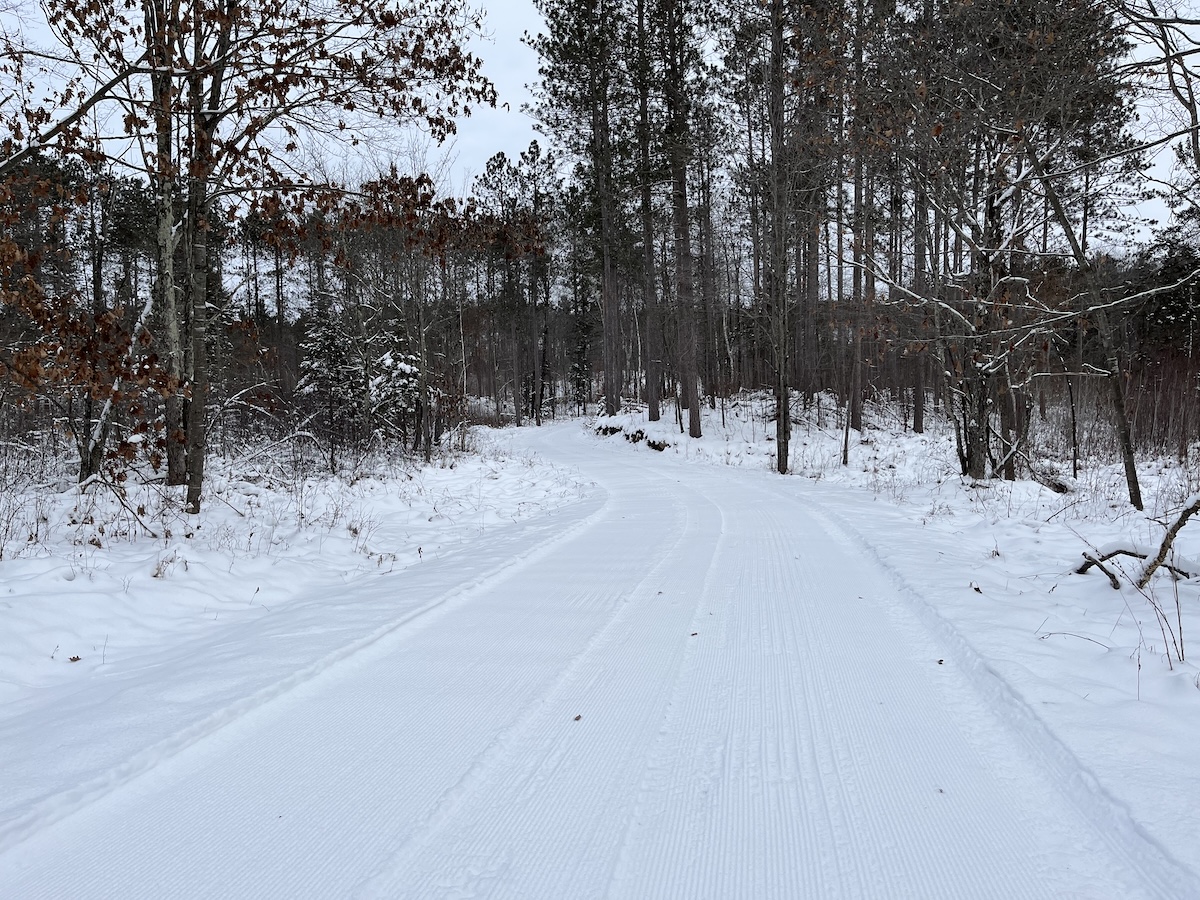
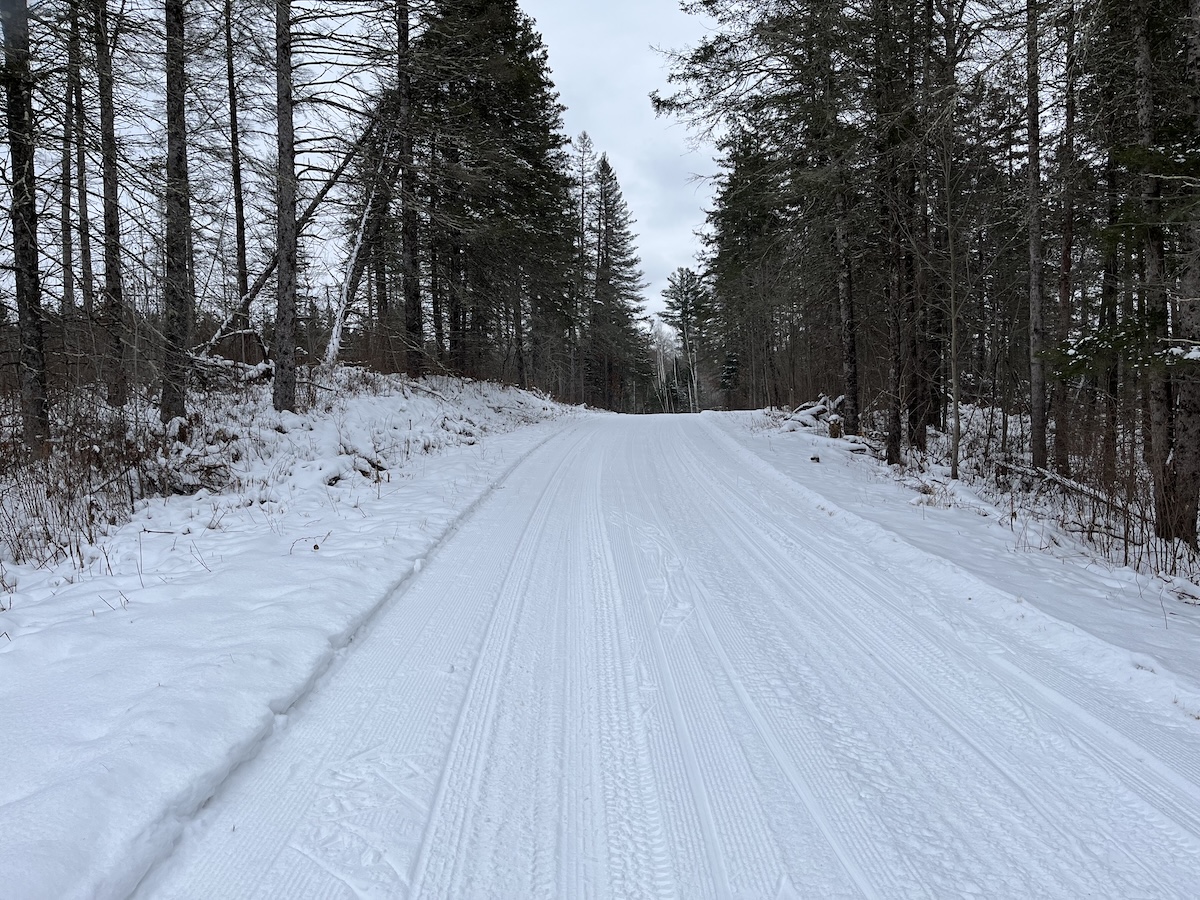
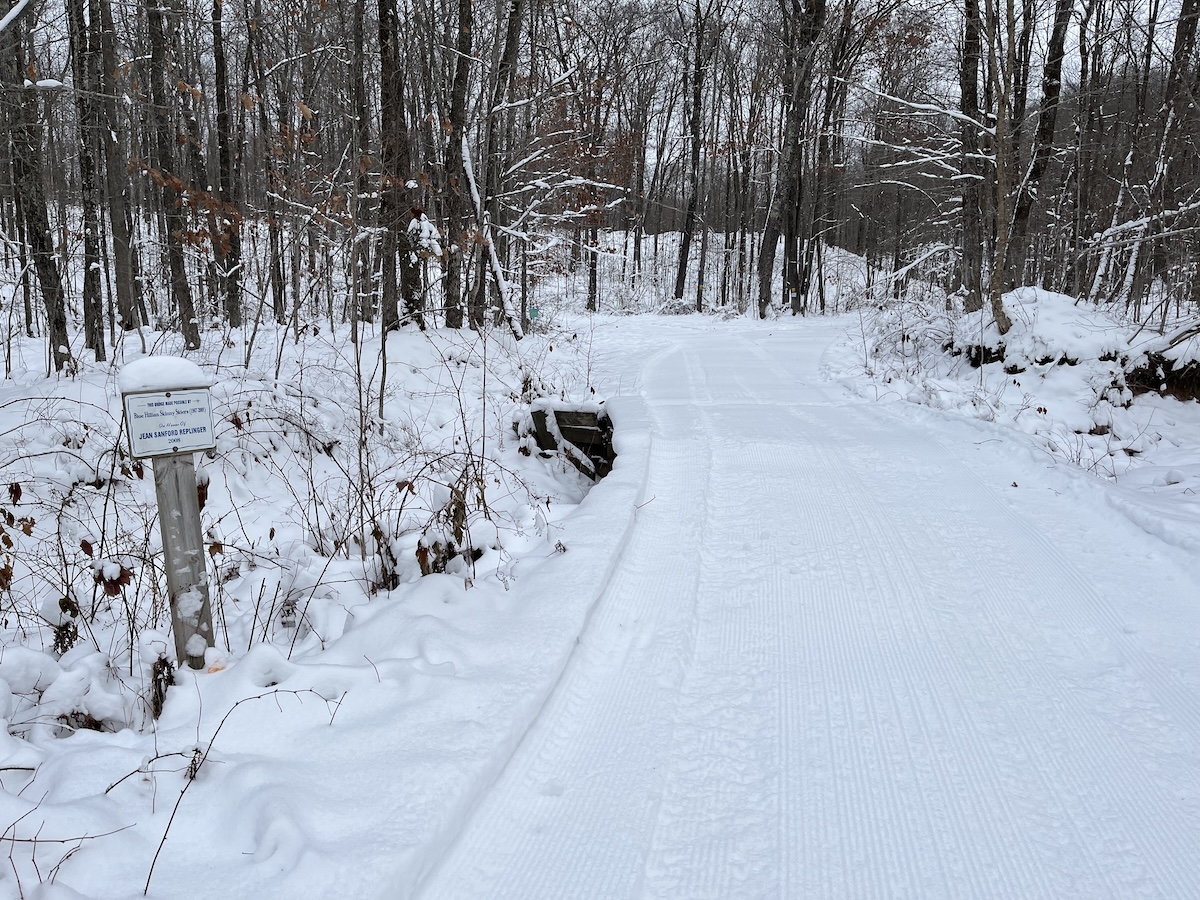
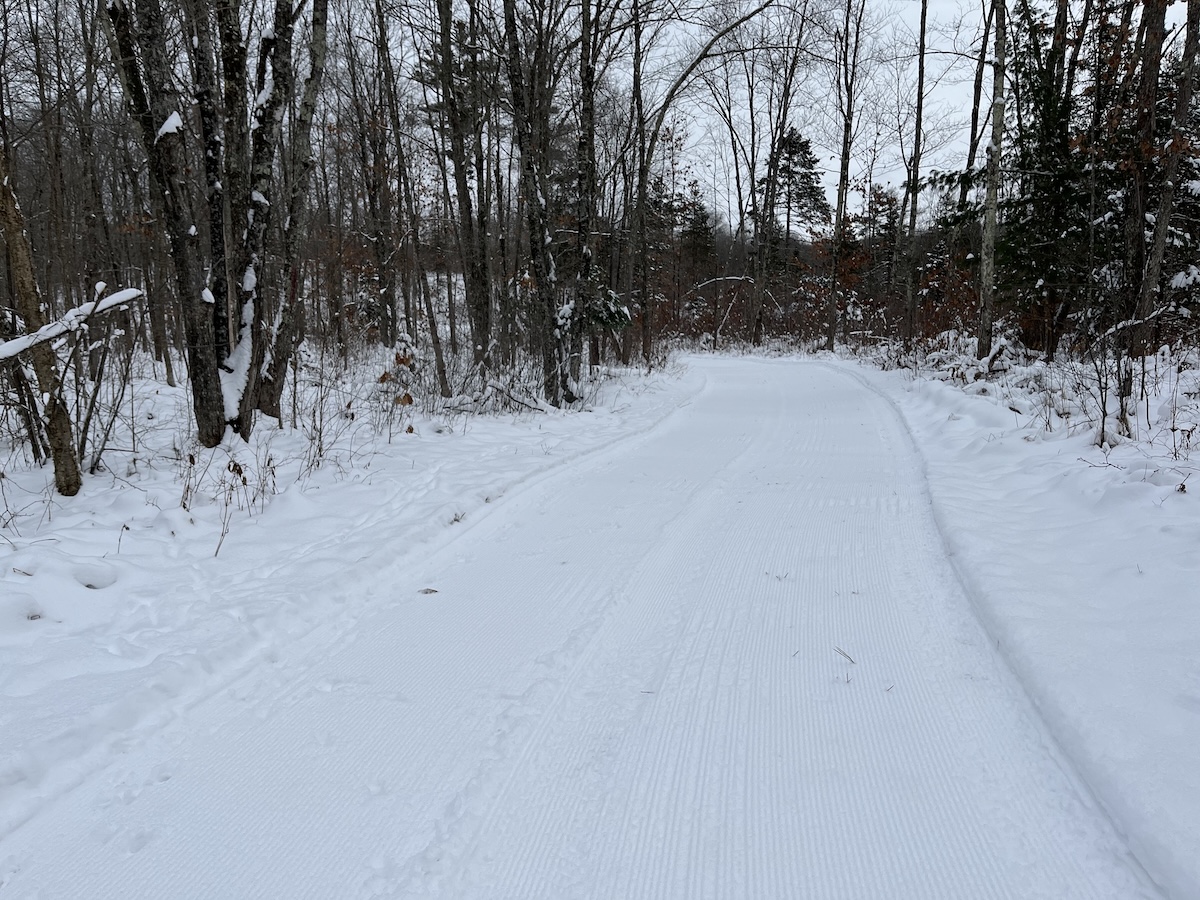

The Blue Hills Trail Association (BHTA) started our summer trail mowing on June 18th. The map (below) shows the trails mowed as of June 18th. Mowing is accomplished in stages during the months of June/July/August. For an updated mowing report and map, visit our website and click on the 'Trail Conditions' link at the top of the page, then scroll down to the 'Mowing Report'.
Background Details:
- We have 22+ miles of trail that need mowing.
- Our crew of mowing volunteers usually mows a total of about 50 hours each summer.
- Prior to 2003, the Rusk County Forestry Department mowed the entire trail system. They were using a tractor with a deck mower -- and the tractor often created deep ruts that negatively impacted the goal of a smooth trail surface.
- In 2003, we (BHTA) purchased a trail mower to be towed behind an ATV so we could mow the softer trail segments. Even that was less than ideal, still leaving tire ruts that later needed repair.
- In 2014, we switched to mowing using a John Deere Gator on tracks. That's when we organized a trail crew to handle the mowing. Using tracks on the soft trail segments has greatly improved the trail surface when it's time to start wintertime grooming for skiing.
- At this time, the Rusk County Forestry Department mows the driest trail segments with their heavier equipment, this amounts to about 1/4 of the trails.
- The Blue Hills Trail Assn mows the remaining 3/4 of the trails using our 2020 Honda Pioneer (with tracks) pulling our AcrEase Trail Mower that cuts a 57" width.
- The 2003 mower was replaced in 2012 with an updated model; and in 2021 we replaced the 2012 engine with an upgraded Briggs & Stratton engine that is working well.
- Mowing typically begins in late June, and our goal is to complete the bulk of the mowing by mid August.
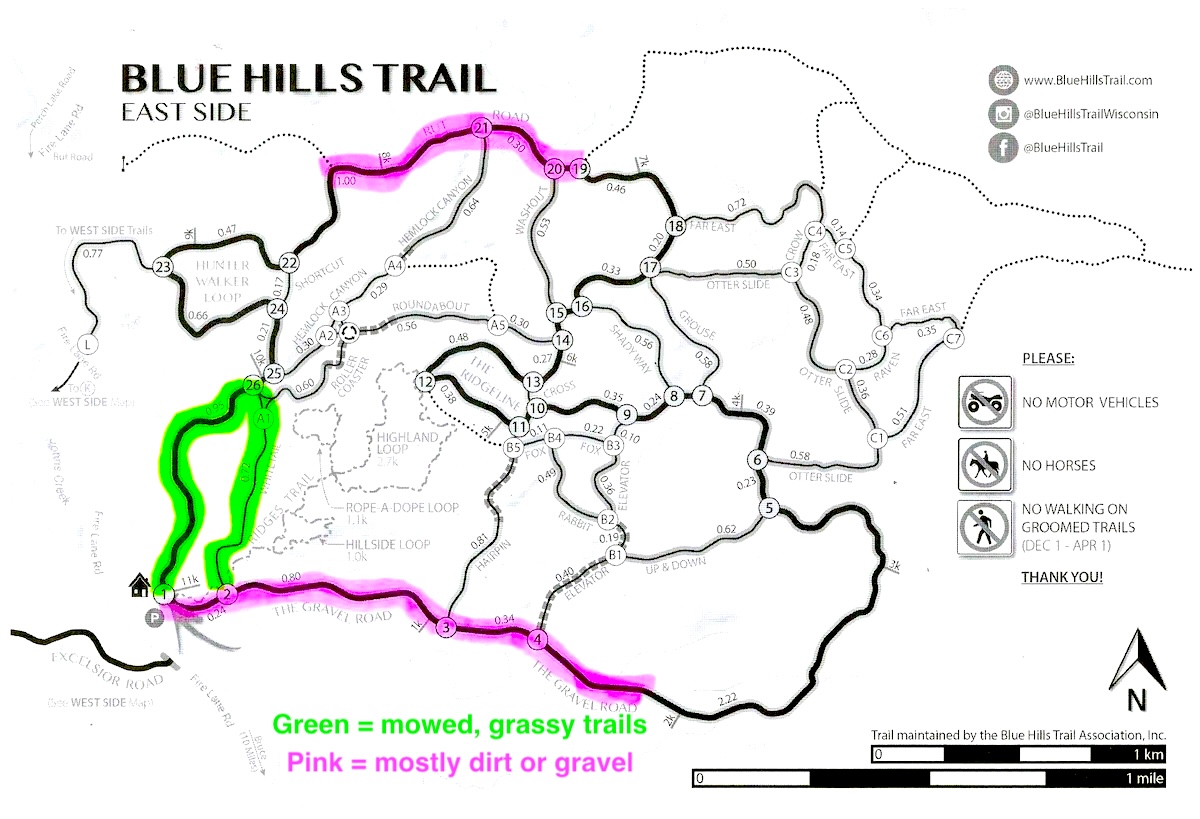


Winter. Welcome Back, Don't Be A Stranger.
At last -- a few days of fantastic skiing! This winter (2024-25) started late, was far too dry, and now is ending early. Hurry back my friend, but try to be on time.
Cross country ski conditions this morning (Sunday, February 23rd) were fantastic on the Blue Hills Trail in northwest Wisconsin. Temps started at 23 degrees F, rose above freezing for the first time in 3 weeks, and later in the day hit the low 40s. During the past week, timely grooming of the packed powder and sugar snow surfaces made for wonderful skate or classic skiing this morning before the predicted warmup moved in later in the day. Quite a contrast to the minus 30F windchills a few days earlier.
Enjoy the following photos showing the beauty of the Blue Hills Trail cross country ski trails in northwest Wisconsin -- taken February 21 - 23 (2025). As lovely as the pictures are, the skiing was even better. Right click the photos to open in a new window and enjoy the full size image.
If you'd like to help offset our expenses, follow this link for donations and annual memberships.







It's been almost two years since we've had enough snow to boast of good conditions for cross country skiing in northwest Wisconsin at the Blue Hills Trail. After warm temps and rain produced a total meltdown in late December 2024, a very dry January 2025 was almost as discouraging as the 2024 January/February record warmth that kept us from enjoying any semblance of wintry weather a year ago. If interested, follow this link to view local snowfall data from the past 25+ years.
Come on out and Ski the Hills! In the past couple weeks, we've received enough snow and cold weather to once again enjoy cross country skiing in the beauty of winter in the Blue Hills of northwest Wisconsin. Take a look at the following photos taken while skiing on a lovely blue sky day at 20 degrees F on February 20 (2025). All these photos were taken on the East Side of the Blue Hills Trail.
If you'd like to donate to help offset our costs, follow this link.











January 17th: it's been another very dry start to this winter of 2024-25. 4" of snow prior to Christmas 2024 before that disappeared during a rainy warmup; and only 3+ inches since. Here's a link to 25 years of local snowfall reports.
The 3+ inches of snow that fell January 12th made our groomers happy. They gave it a try, and rolled (packed) the East Side of the trail system, creating a corduroy surface. Unfortunately, there wasn't a lot of moisture in that snow, and the resultant base is very thin. Most of the groomed trails have grasses showing, and underlying rocks or dirt spots that might catch your skis. But NOTE: we're lucky to have one short section of trail that is offering 'OK' skiing: the 'Gravel Road' has just enough base to conceal most of the rocks. On the East Side map, this is the section from 1-2-3-4 plus a 1/2 km beyond intersection #4. Be sure to use your rock skis on any of the trails, and use extra caution knowing that it's likely you'll find an occasional rock that can throw your balance.
The West Side trails are ungroomed and have about 3 inches of snow that you can explore. Once again, be aware that there is no underlying base -- so it's likely you'll discover some hidden rocks and dirt spots. Enjoy the little snow we have. And hope for a nice snowfall in the near future.


Last winter (2023-2024) really couldn't be called winter. Too warm, too dry, and almost no skiing in our part of northwest Wisconsin. My favorite time of year was trashed by climate change. Bah Humbug!
We've lately had a stretch of cold temps, the frost is freezing up the trails, and we're hoping to enjoy winter soon. Here's hoping we have more cold weather followed by enough snow to call our groomers into action.
Below are a couple photos show early December 2024 conditions at the trailhead, a tempting shallow cover of white.


Our 36th Annual Fundraising Banquet was held Saturday, November 2nd at Lehman's Supper Club in Rice Lake. While bidding on many silent auction items during the social hour, attendees shared the camaraderie of like-minded silent sports enthusiasts. After a fabulous buffet meal, our president (John Waldron) reviewed the 'State of the Trails'.
Then we were greatly entertained by guest speaker Sam Thayer as he educated us regarding responsible foraging in the Blue Hills, tempting us with his tasty descriptions of edible wild plants.
To close the evening we 1)selected the winner of our fall raffle (Bryn Rademaker won the $250 gift card for use at Spring Street Sports in Chippewa Falls), then 2)distributed the silent auction items among the winners.
Fun evening.
Many THANKS TO OUR MEMBERS, many THANKS TO OUR DONORS! And a big thank you to Butch and Trudy Lehman (Lehman's Supper Club).























We're trying to make the best of a warm, dry winter (2023-24) at the Blue Hills Trail in northern Wisconsin.
November and December were disappointing months for those of us that enjoy winter. To top off the record high temps in December, Christmas was wet (1.5" rainfall) and the ground was bare. Finally in early January some cooler weather moved in, and by mid month we counted several snowfalls amounting to 6 inches. Just enough to groom our 20+ miles of ski trails -- and enough to entice folks to break out their snowshoes and their 'rock' skis.
The warming house has been quiet at a time of year it's usually overflowing with smiling faces. But at least for now we have a little taste of winter.
The following photos show conditions during a week of cold temps in the middle of January. Catch it while you can, the weatherman predicts another blast of hot air.














Post Categories
Blue Hills Trail
instagram updates
Subscribe to Newsletter Updates
Stay in-the-know about grooming updates, special events, news, announcements, volunteer days, and more. Rest-assured, we never sell or share your information.


